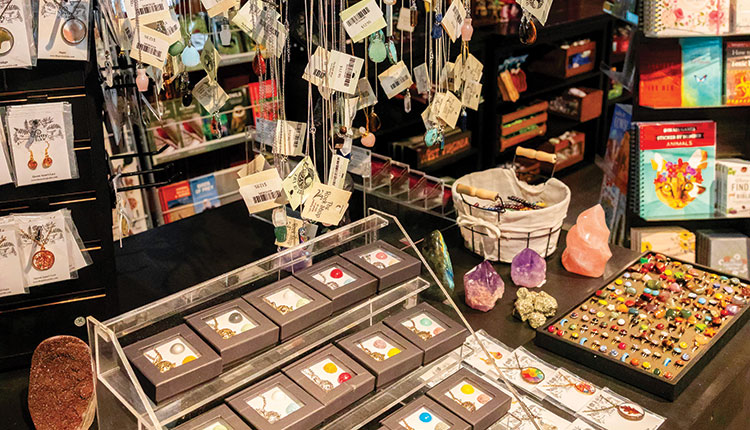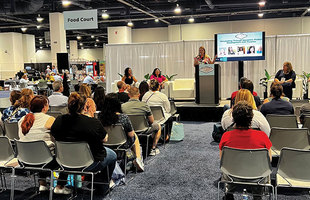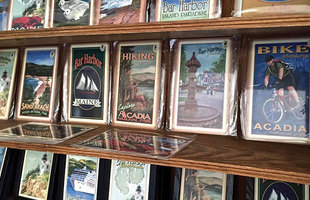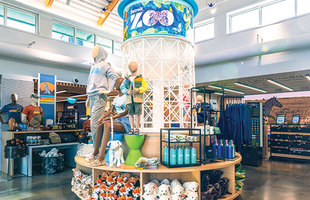When tourists stop in a park gift shop before or after a hike, jewelry may not be the first souvenir on their minds, but this category often performs surprisingly well for these destination retailers.
“People often go in a park store with the intention of buying a shirt or a magnet to collect. They don’t tend to go looking for jewelry,” says Travis Maier, vice president of sales and marketing at Wheeler Manufacturing, which is a family-owned jewelry vendor based in Lemmon, South Dakota.
But jewelry can be a great impulse buy at national and state park gift shops, he says.
“I don’t know of anyone who goes into a park store looking for a nice pair of earrings, but many of these stores sell thousands of dollars of them every year,” says Maier.
The styles of jewelry that work at park stores might vary based on shop and destination. For instance, tourists visiting Arizona’s Petrified Forest National Park enjoy merchandise that incorporates petrified wood, including jewelry.
“The jewelry that sets us apart is the petrified wood jewelry,” says Lawrence Yazzie, general manager at the Petrified Forest Trading Company. “They are made locally and fit perfectly to the park.”
Yazzie adds the customers also like Navajo-made jewelry, including necklaces, earrings, pendants and bracelets. He says they love hearing stories about how these products have been made.
Some parks feature big lodges on-site that host weddings and other formal ceremonies. Hannah Condon, merchandise manager for Starved Rock Lodge & Conference Center in Oglesby, Illinois, explains that the lodge shop at the state park often has guests coming in for weddings and formal events as well as hikers.
She says the shop has to carry some nicer costume jewelry options to serve people coming in for a formal event.
“We sell some glitzy items with rhinestones for weddings or special events if people forgot them at home,” she shares.
No matter where a park retailer is based or the mix of clientele coming in, Condon adds that it’s important to carry jewelry guests can’t get elsewhere.
“I try to pick out things that are nice quality and unique — things you won’t find somewhere else,” she says.
Tied to the land
Maier says he has noticed increasing demand around carrying jewelry that’s made in the USA, noting that much of Wheeler Manufacturing’s jewelry fits that bill.
“Having products made in the USA is incredibly important to a lot of national parks,” he says.
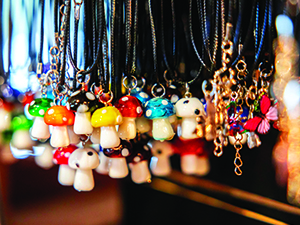
Colorful gemstones inspire guests at the Blackwater Lodge Gift Shop.
Photos: Mark Moody
Jessica Dolin is a retail manager for 32 state park and forest shops in West Virginia. She says customers like taking home jewelry that’s locally made or features the state outline, so she tries to carry West Virginia-made jewelry options at her shops.
“I’ll use multiple avenues to find talented artists,” she explains. “Some park managers and superintendents refer people to me. I also go to fairs and markets in West Virginia to see who I can find. Faire is a good resource. And then word of mouth is ideal for us.”
Animals and plants native to the state’s parks are also popular themes on jewelry, she adds.
“People want to take a piece of West Virginia home with them, so we find pieces that encompass West Virginia and the parks,” says Dolin.
Katherine Kornblau, founder of KJK Jewelry, says anything featuring gemstones tends to be popular at park stores and botanical shops.
“We’re seeing a surge in popularity for jade,” she says. “Amethyst is another stone we see strong sales in.”
Kornblau says park retailers will want to carry some jewelry that highlights the park’s flora as well. “For a national park in the desert, people will want cacti. Have a full range of flora represented for customers.”
Melissa Lew offers 10 jewelry collections, many of which feature popular public lands, fauna and aquatic life.
Lew also released a national parks line in the past year with designs that reflect these destinations. She says it’s important for park retailers to select jewelry designs that tie to landmarks, animals and other elements that can be found in the park.
“Storytelling is a powerful tool in merchandising — we crave meaning and connections,” she says. “You can tell your park’s story through a carefully curated collection of designs inspired by landmarks and the animals and plants that call your park home versus generic merchandise.”
Cause focused
Park visitors also appreciate products that give back to environmental causes, including jewelry.
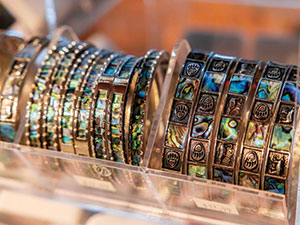
Stacked bracelets with bear prints help remind Blackwater Lodge’s guests of their time at the park.
Lexie Detzel, associate buyer for Greenwood Village, Colorado-based Xanterra Travel Collection, buys merchandise for dozens of stores, including some national park shops. She says she has noticed high demand for sustainable merchandise.
“We focus on sustainability both in our products, how items are packaged as well as how they can be recycled,” she says.
Detzel says customers also like to buy cause-focused merchandise.
“A popular trend we are seeing right now are giveback programs,” she says. “A few years ago, Pura Vida was very popular for giving back, and now we are seeing similar trends with other costume jewelry lines that offer a fun style and that give money back to charity.”
Wheeler Manufacturing debuted its Made for Adventure line in late 2024, which encourages embracing the outdoors while donating a percentage of proceeds to nature conservation organizations.
Melissa Lew also gives back through its partnership with One Tree Planted, which is a nonprofit organization that ensures one tree is planted for every piece of jewelry sold. Lew explains, “People are looking for brands that have sustainable practices or production and brands that give back.”
Appealing to everyone
Since jewelry preferences can vary widely, it’s important for park retailers to carry a good assortment within this category, from necklaces and bracelets to rings and earrings.
In addition to jewelry with nature themes, Maier suggests park retailers carry a few more generic jewelry options for people who want to buy a necklace or bracelet as a gift for a loved one back home.
“A lot of times people aren’t buying for themselves, but it’s for a neighbor watching their dog while they were gone,” he says. “Your jewelry doesn’t all have to resemble your location, so you can’t be too picky with the assortment.”
Detzel says it’s also a good idea to have jewelry at different price ranges to make sure there’s something for everyone in this category.
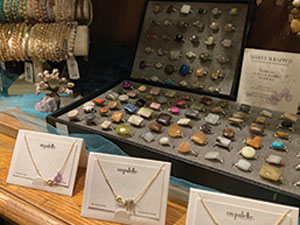
Starved Rock Lodge & Conference Center’s shop has some simple yet classy necklaces and rings for guests to choose from.
“I buy fine jewelry, which can be anywhere from $60 to $350, and I also buy the costume jewelry category, which usually ranges from $5.99 to $50,” she says. “We try to carry a good, better, best assortment so that we can give our customers a range of products for all ages. We recognize that people want both quality materials handmade in the USA as well as lower priced retail gift items.”
To encourage more customers to buy jewelry, Kornblau advises retailers always keep the majority of their jewelry out of cases to make it easier to try on. She says they should reserve cases for high-end items since customers tend to think jewelry is too expensive for them or not accessible if it’s behind a case.
Dolin says she likes to keep jewelry out of cases at her shops to make it more accessible for customers to try on.
“We don’t want you to have to ask us to take something out of a case to try it on,” she says. “We want you to touch, browse. That entices more people to make a purchase.”
